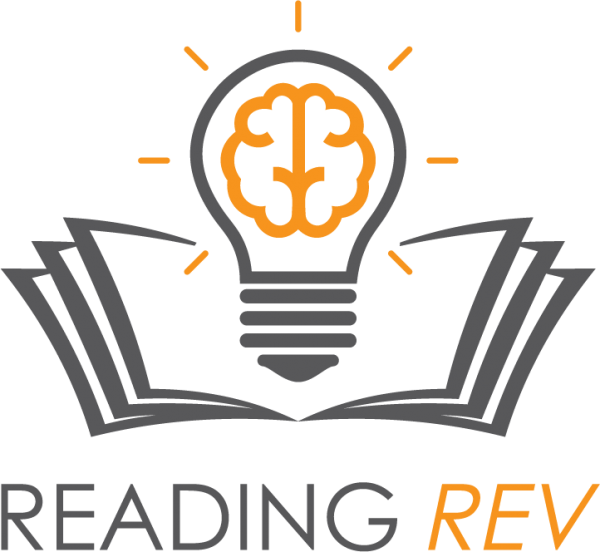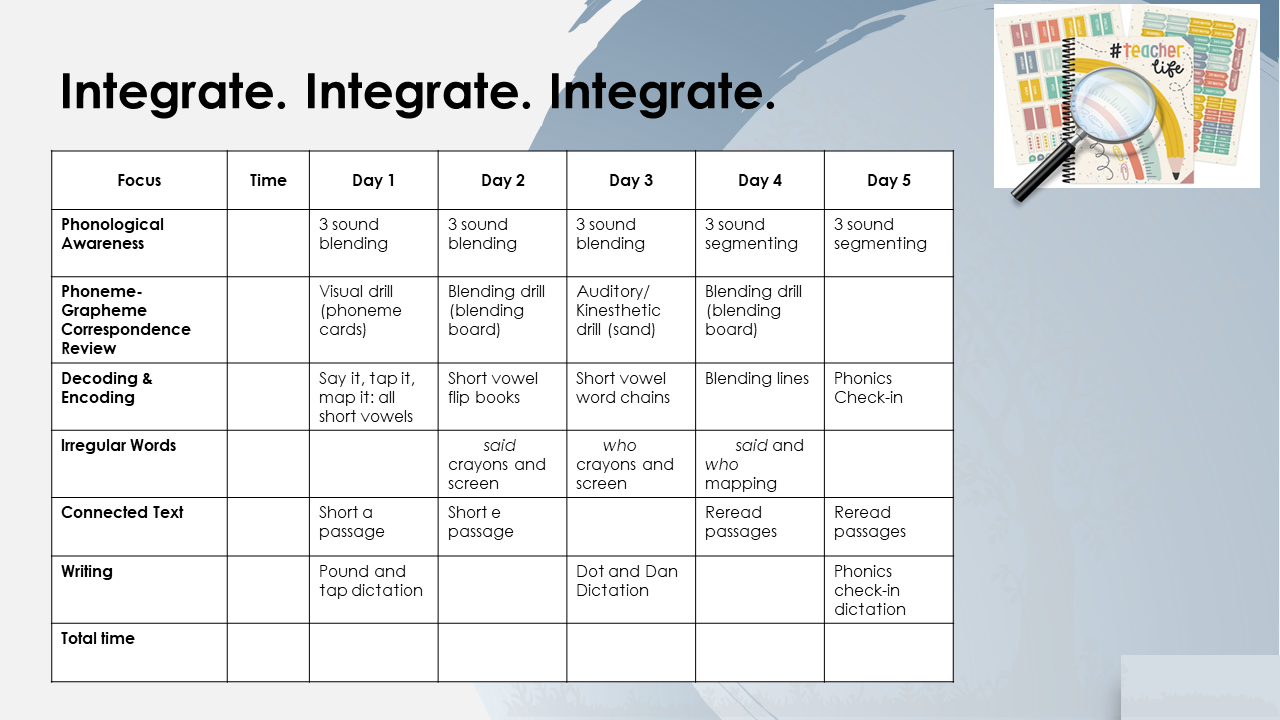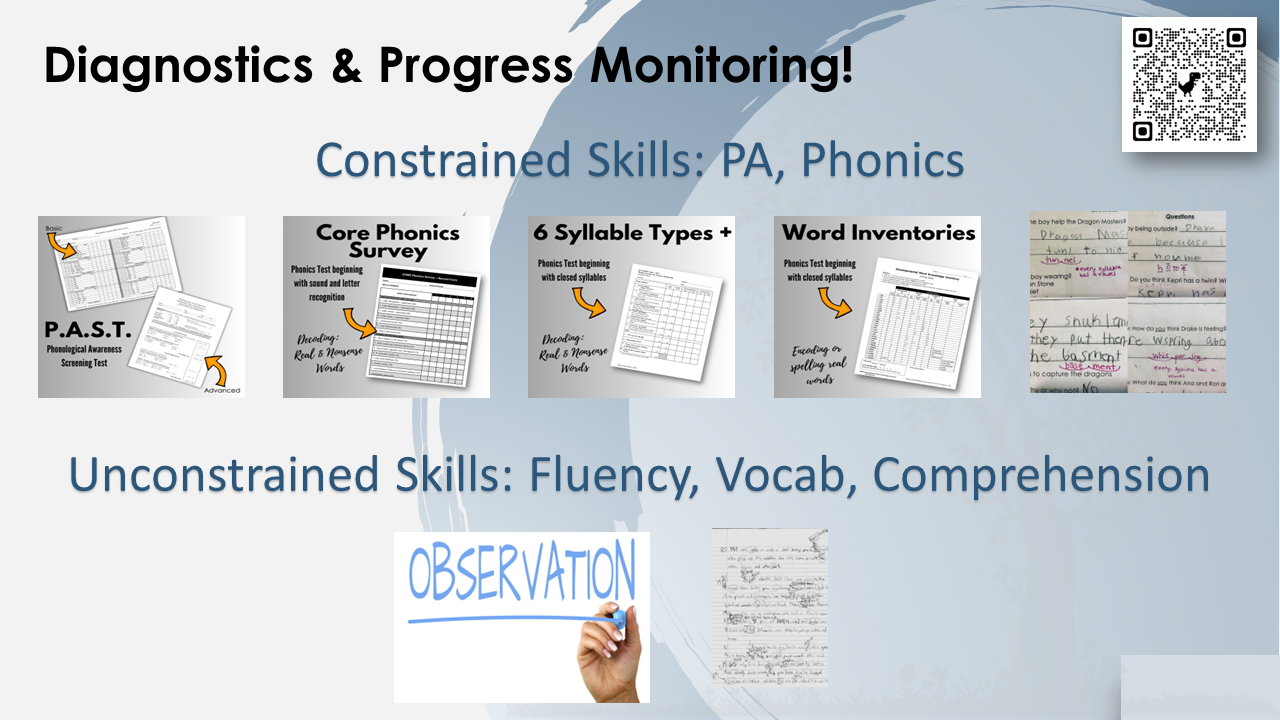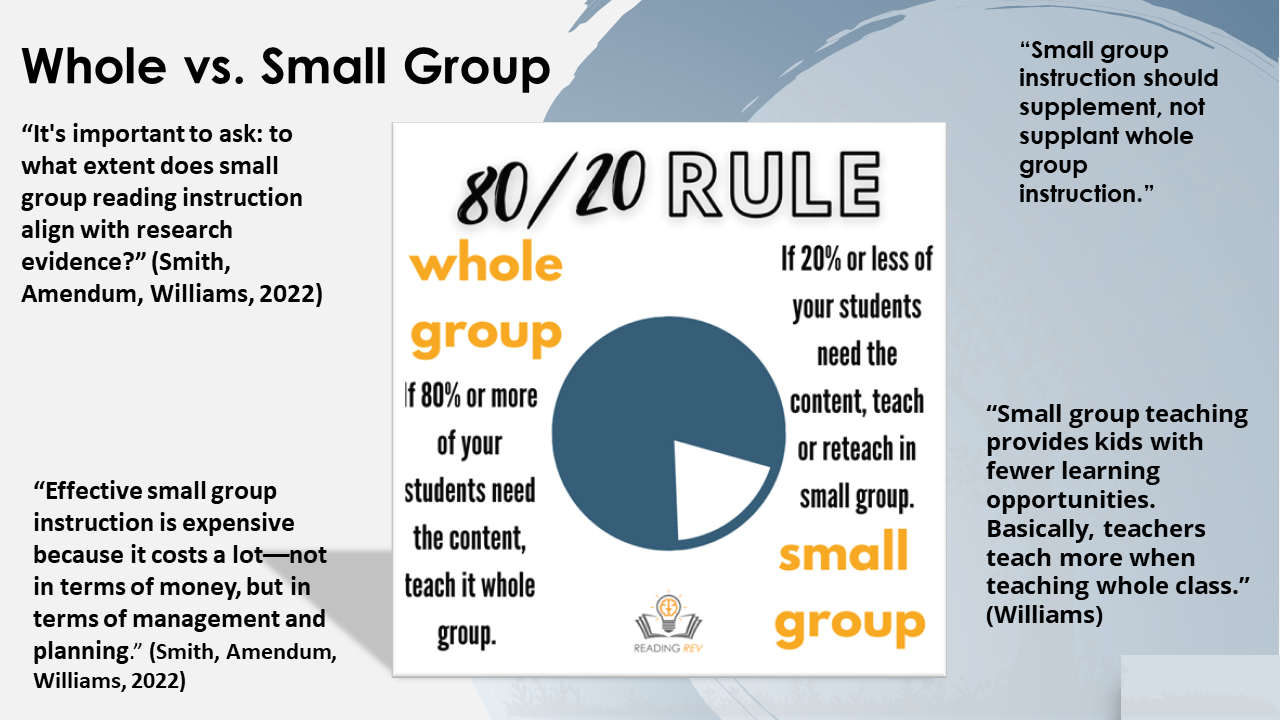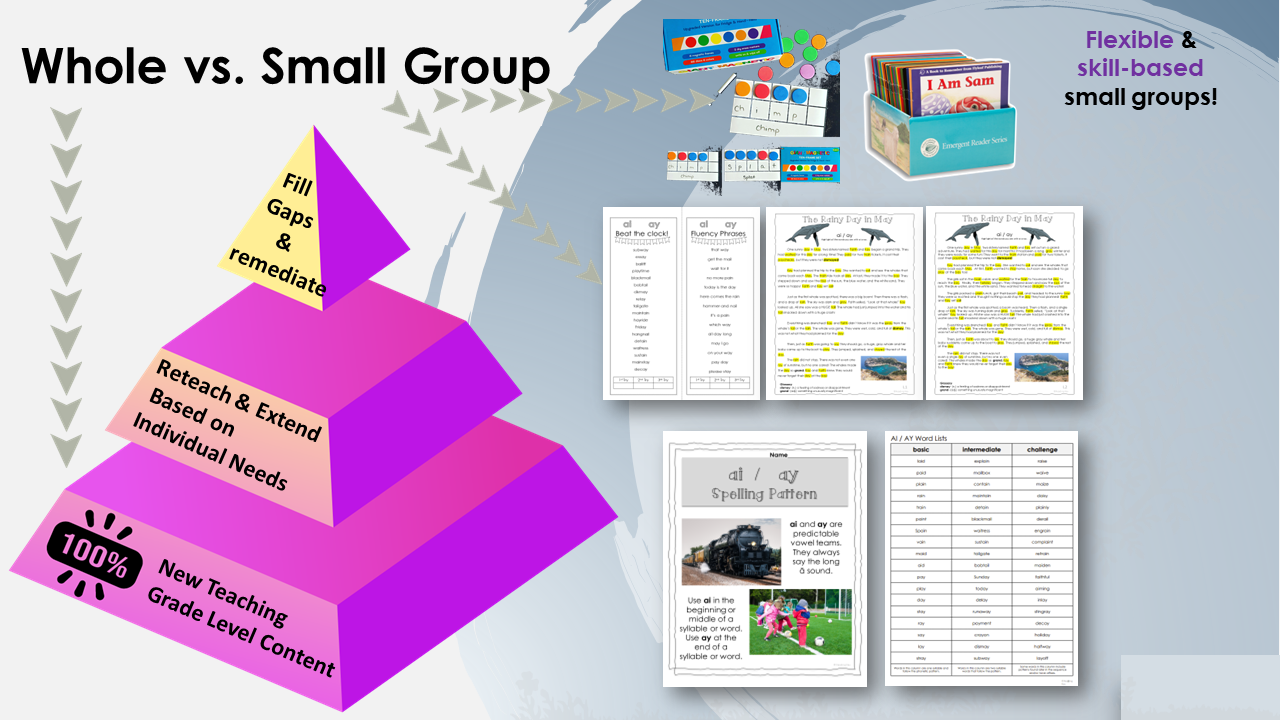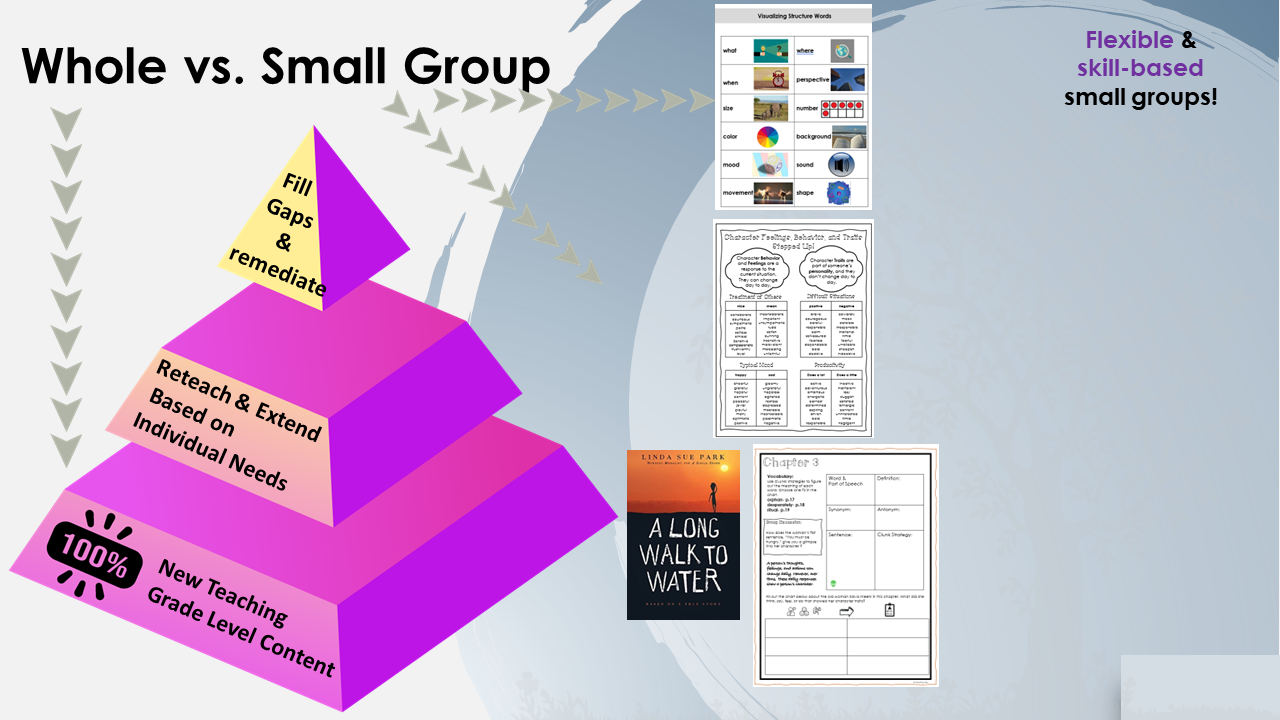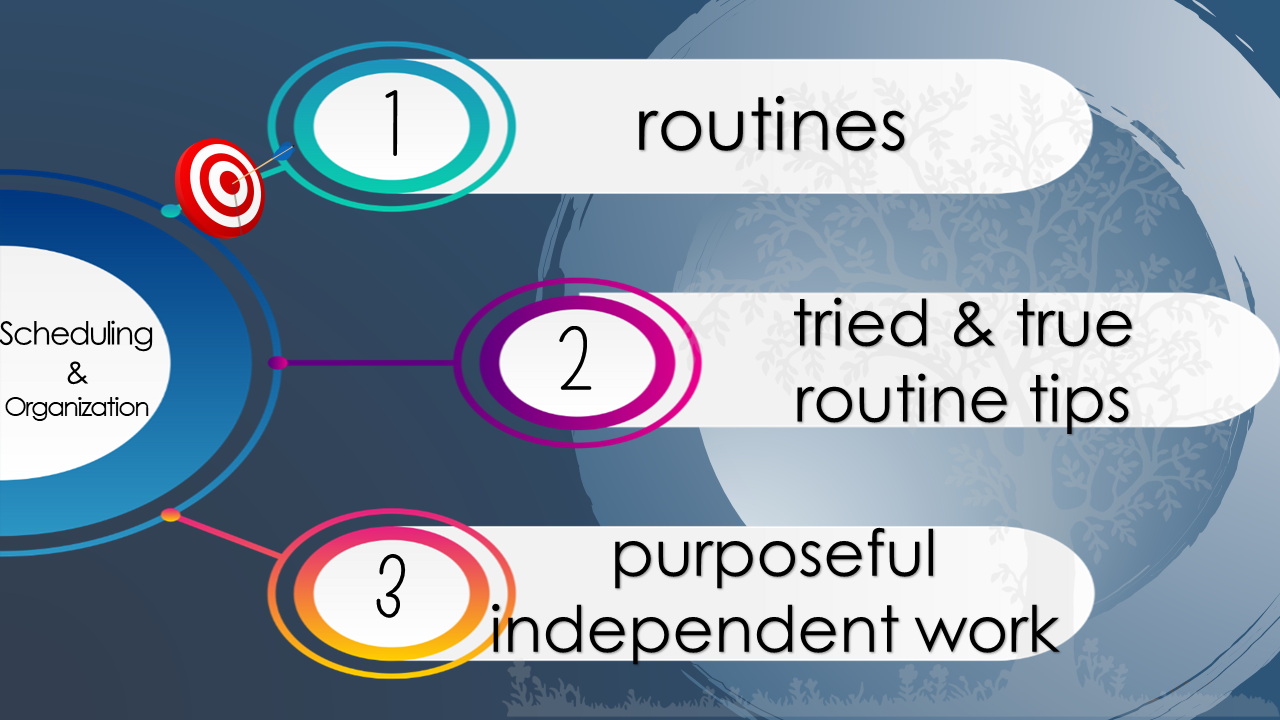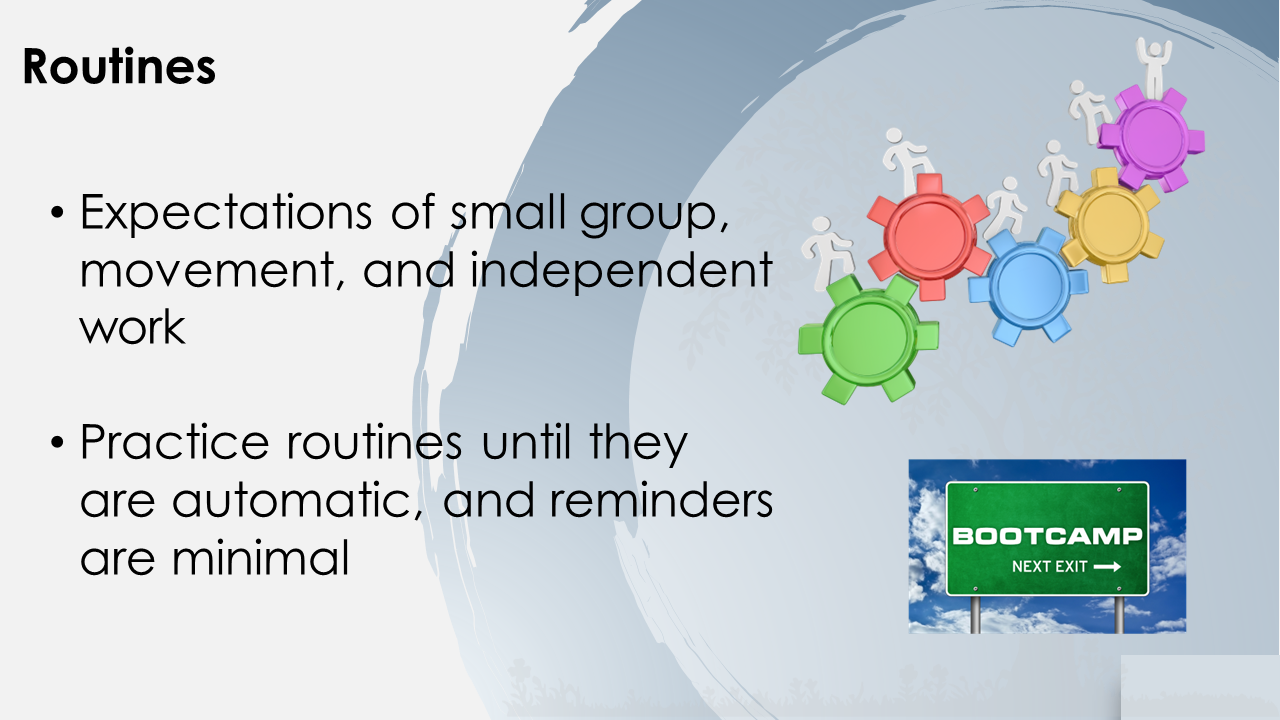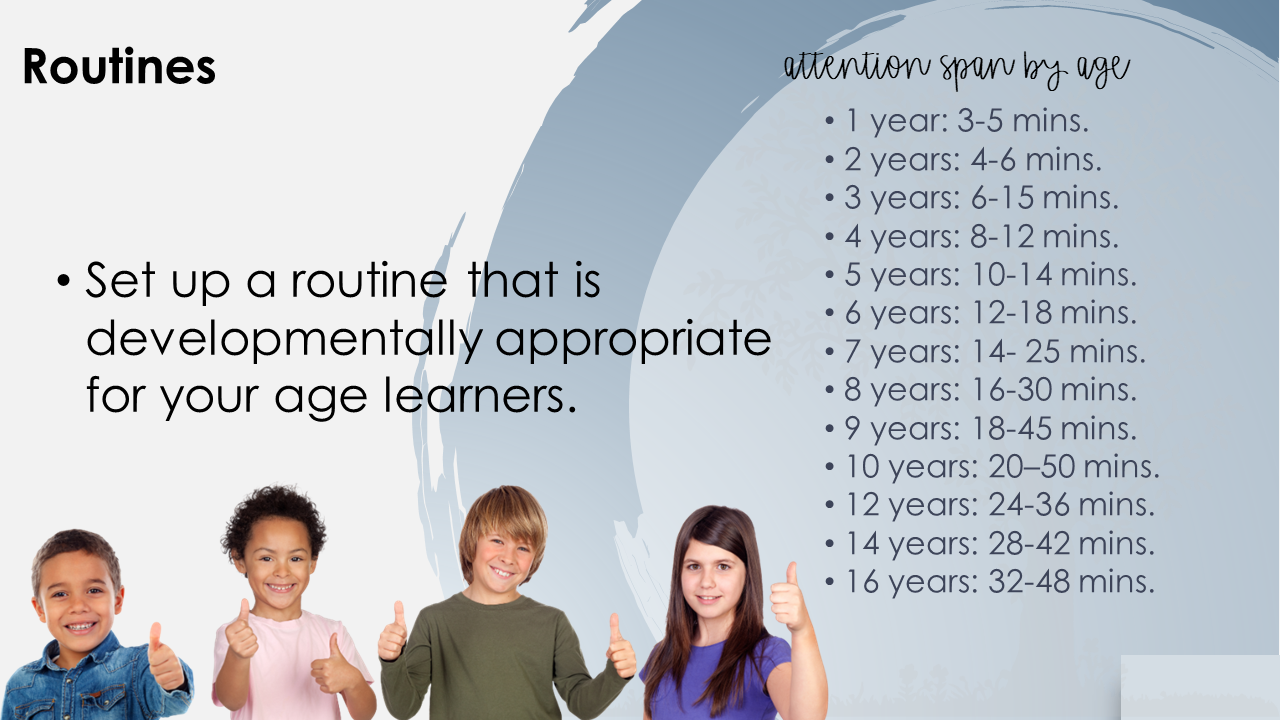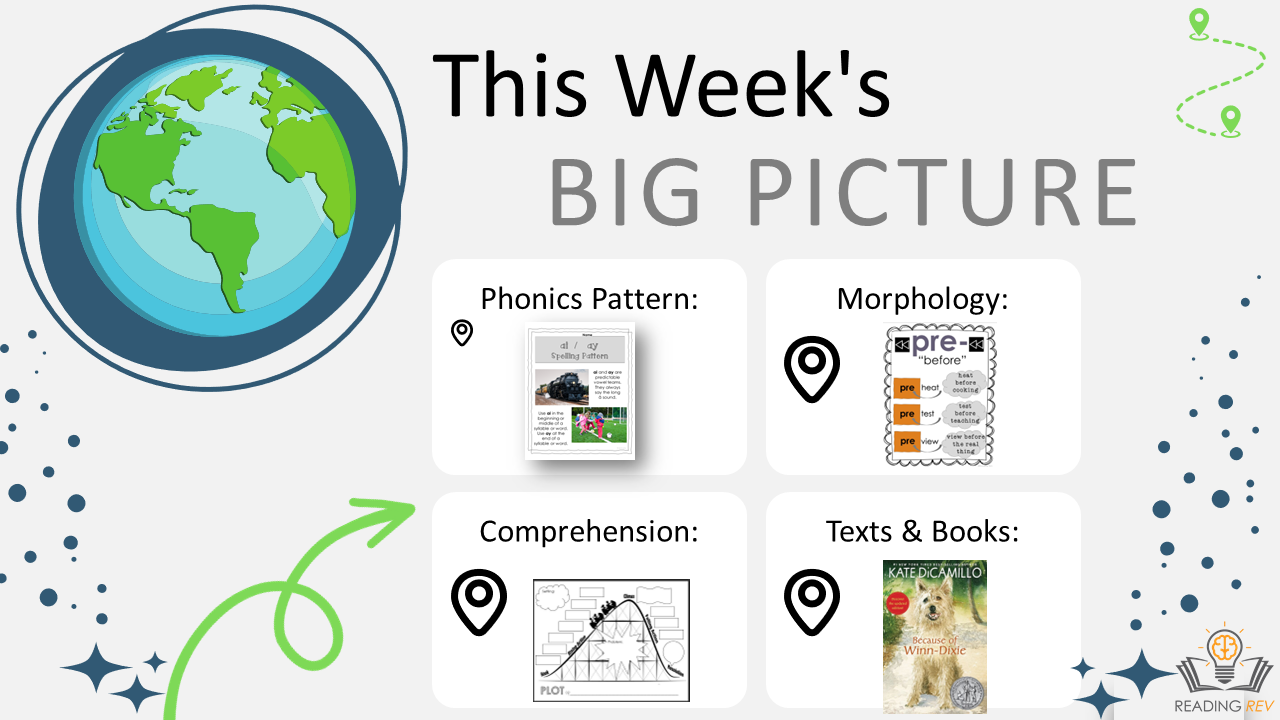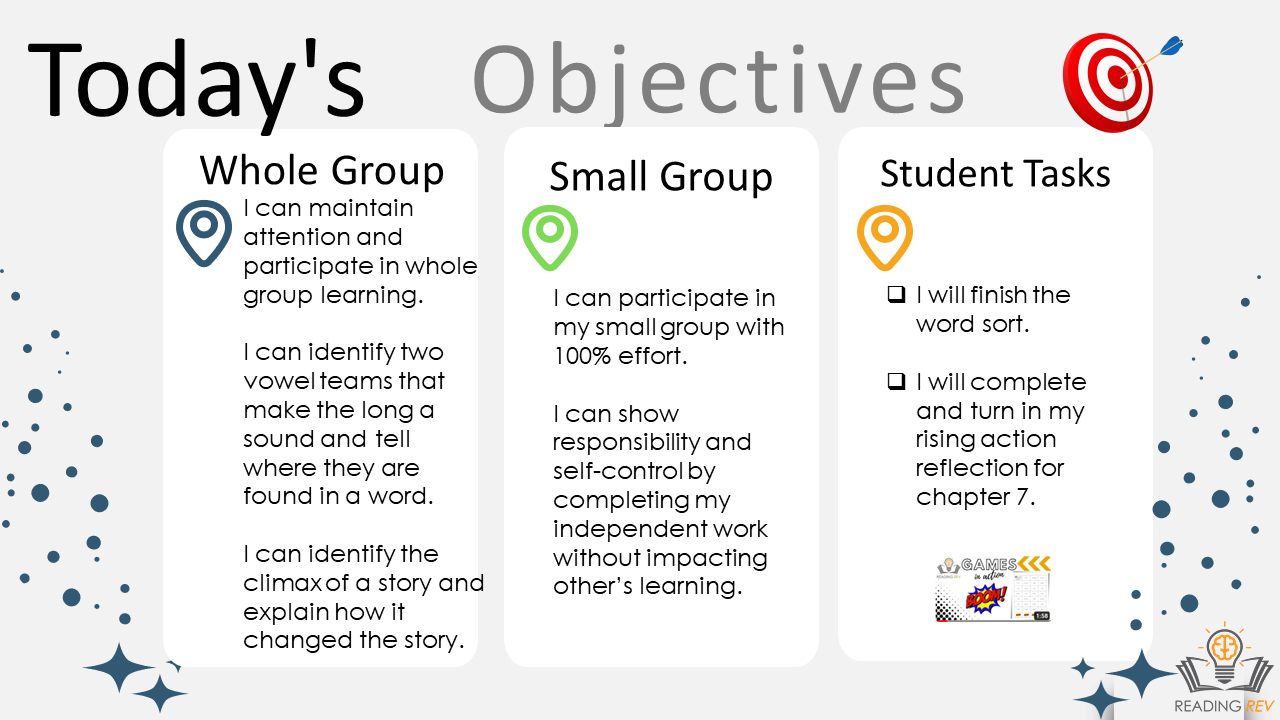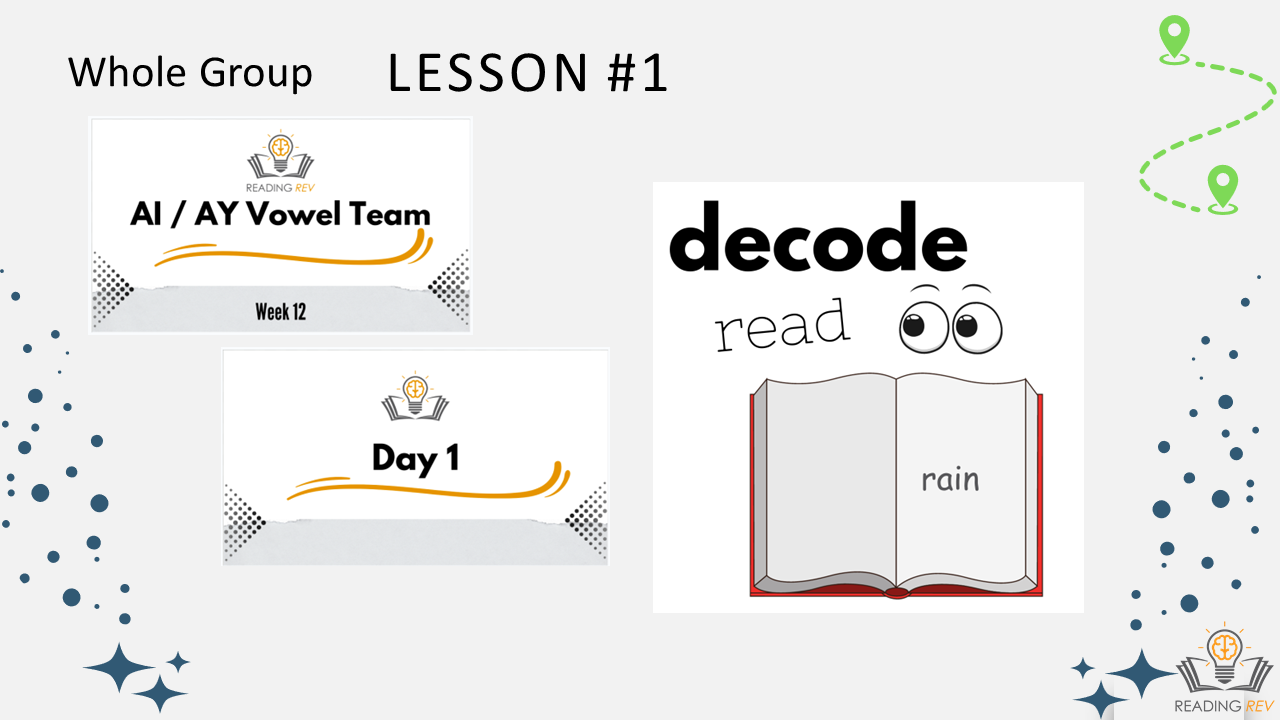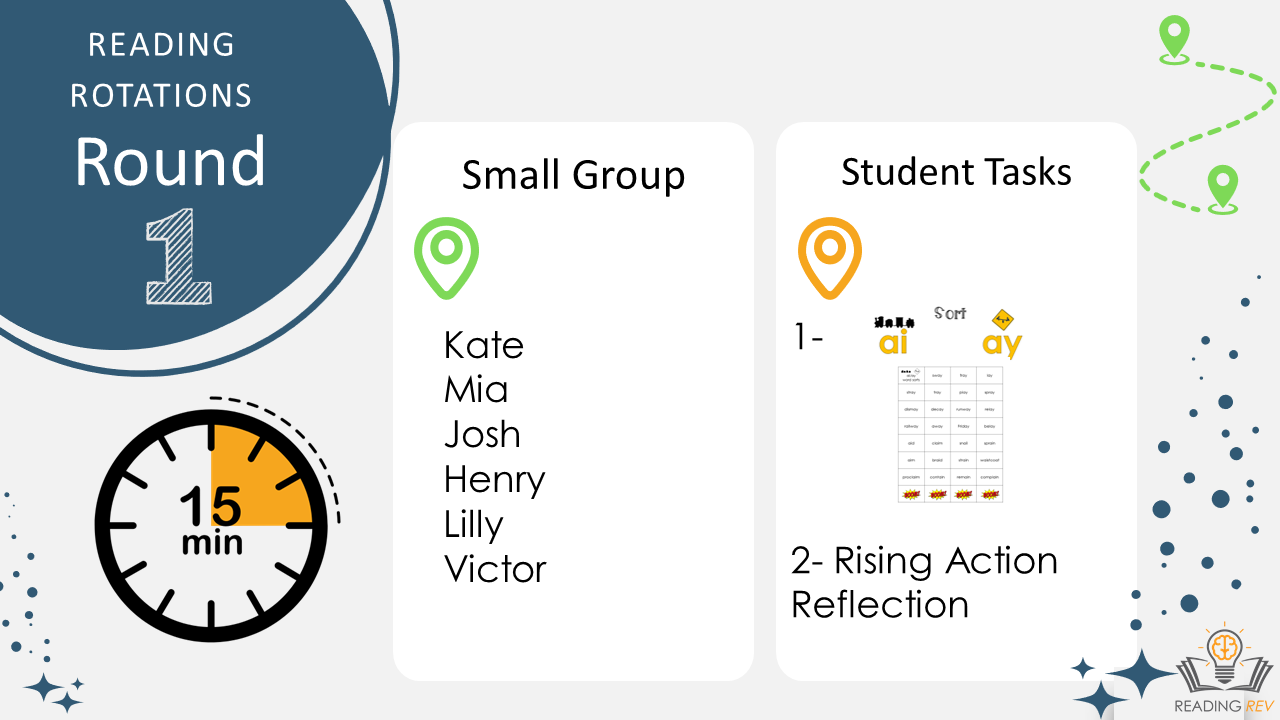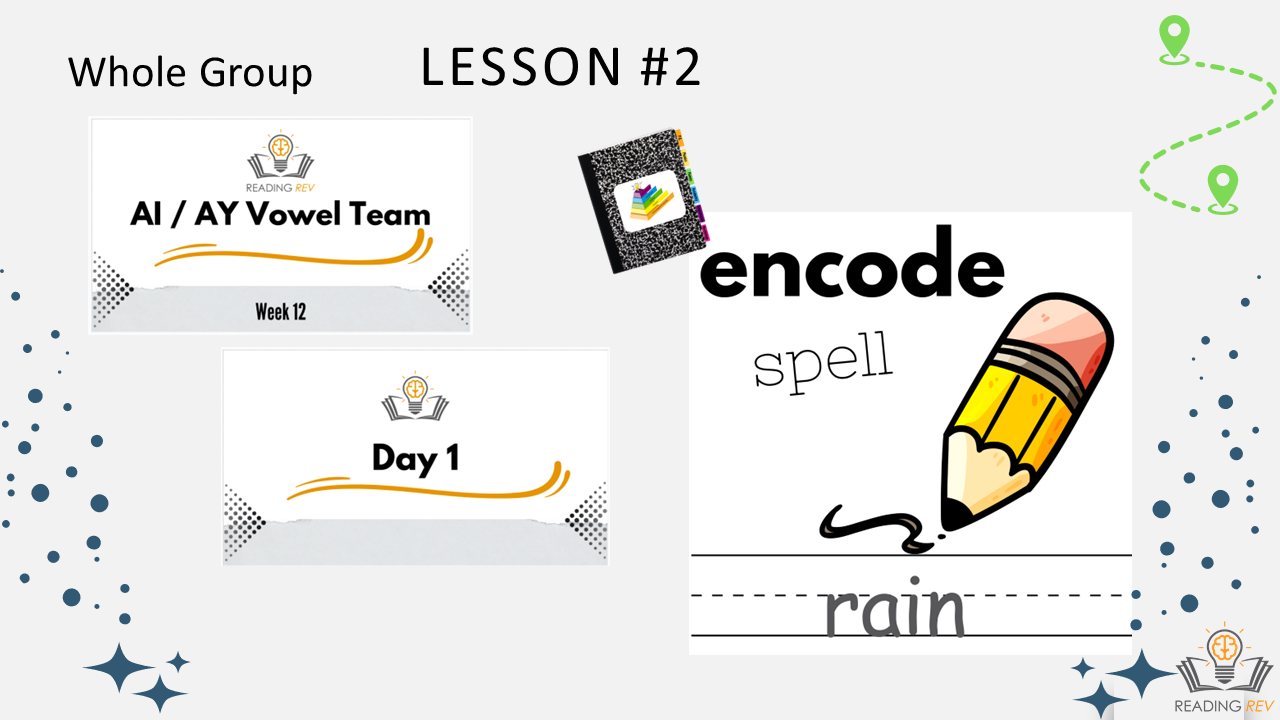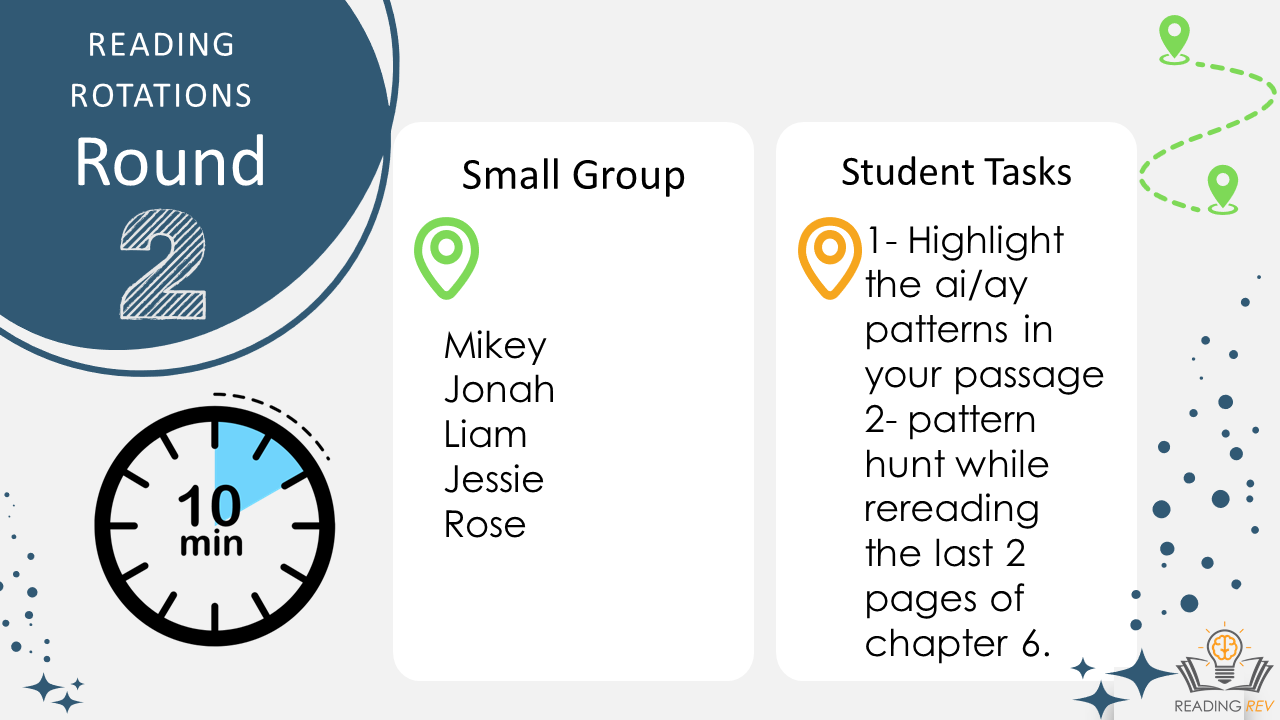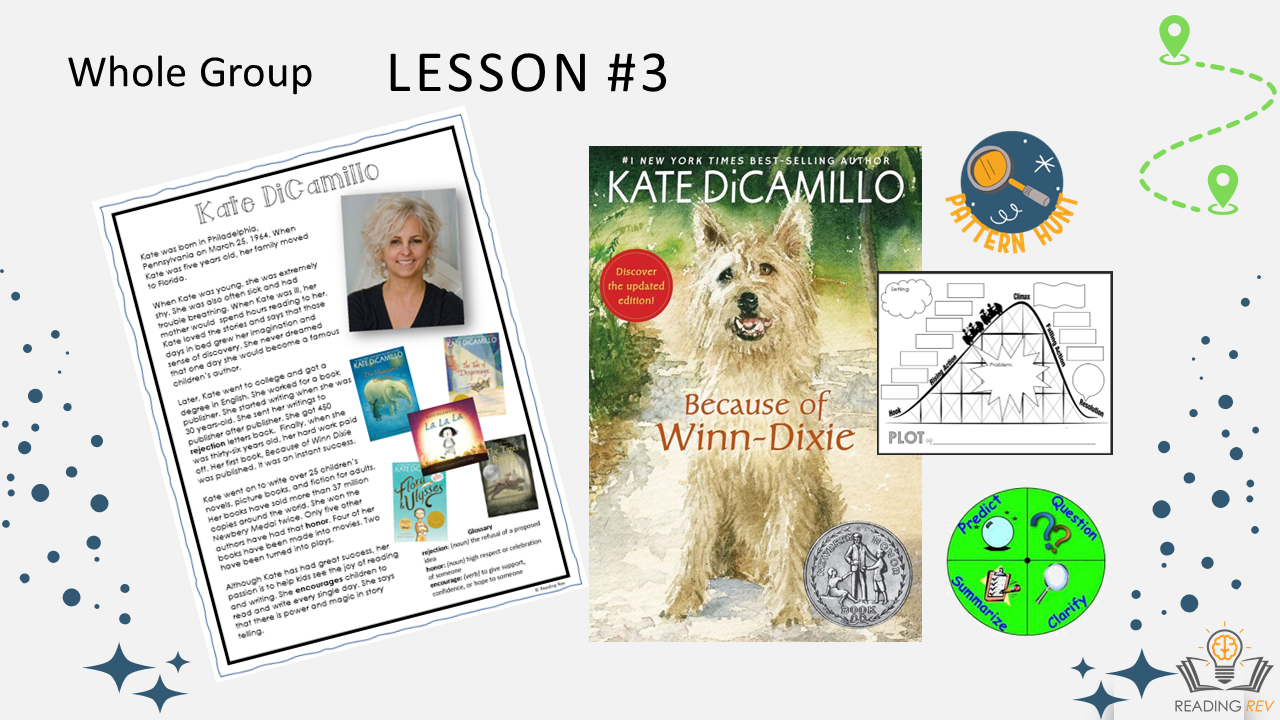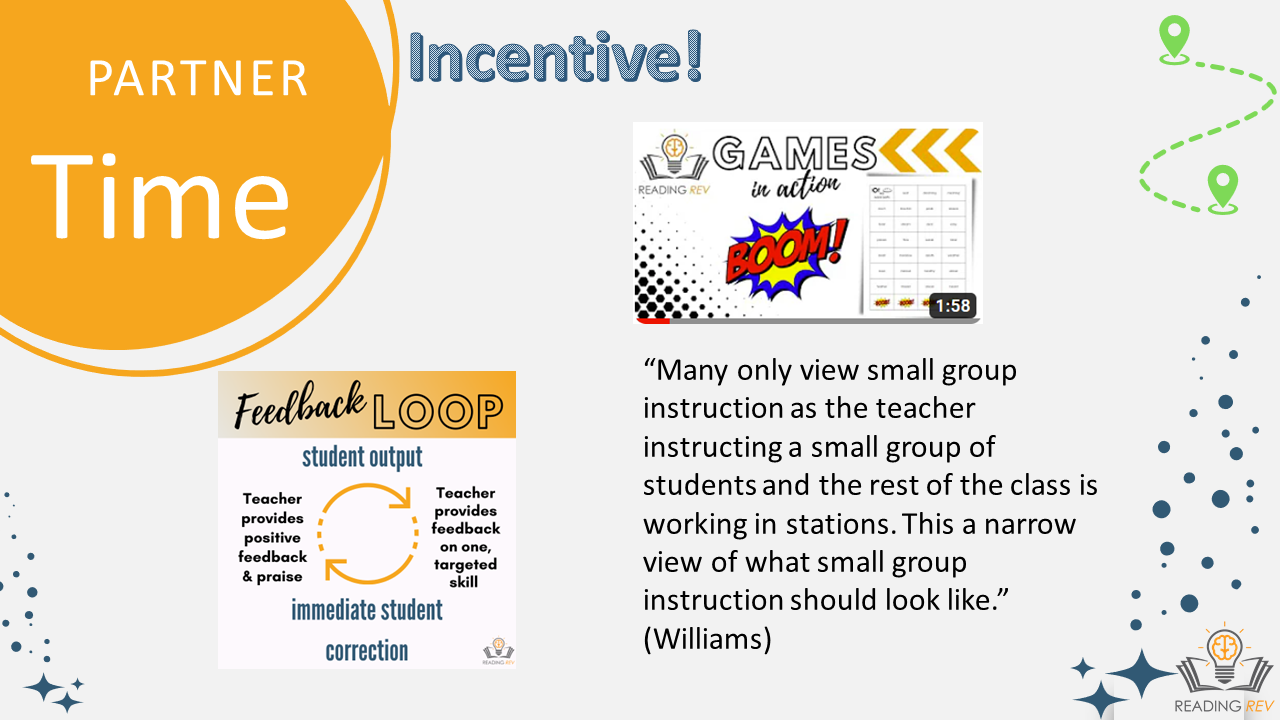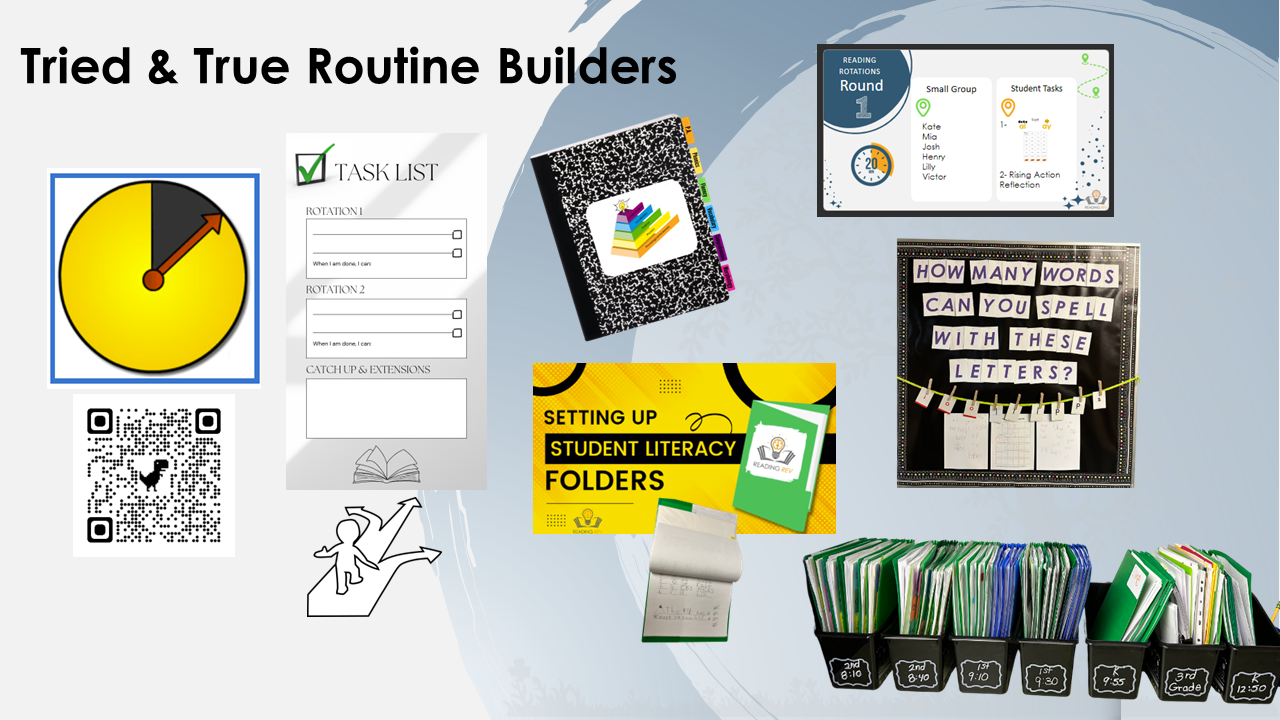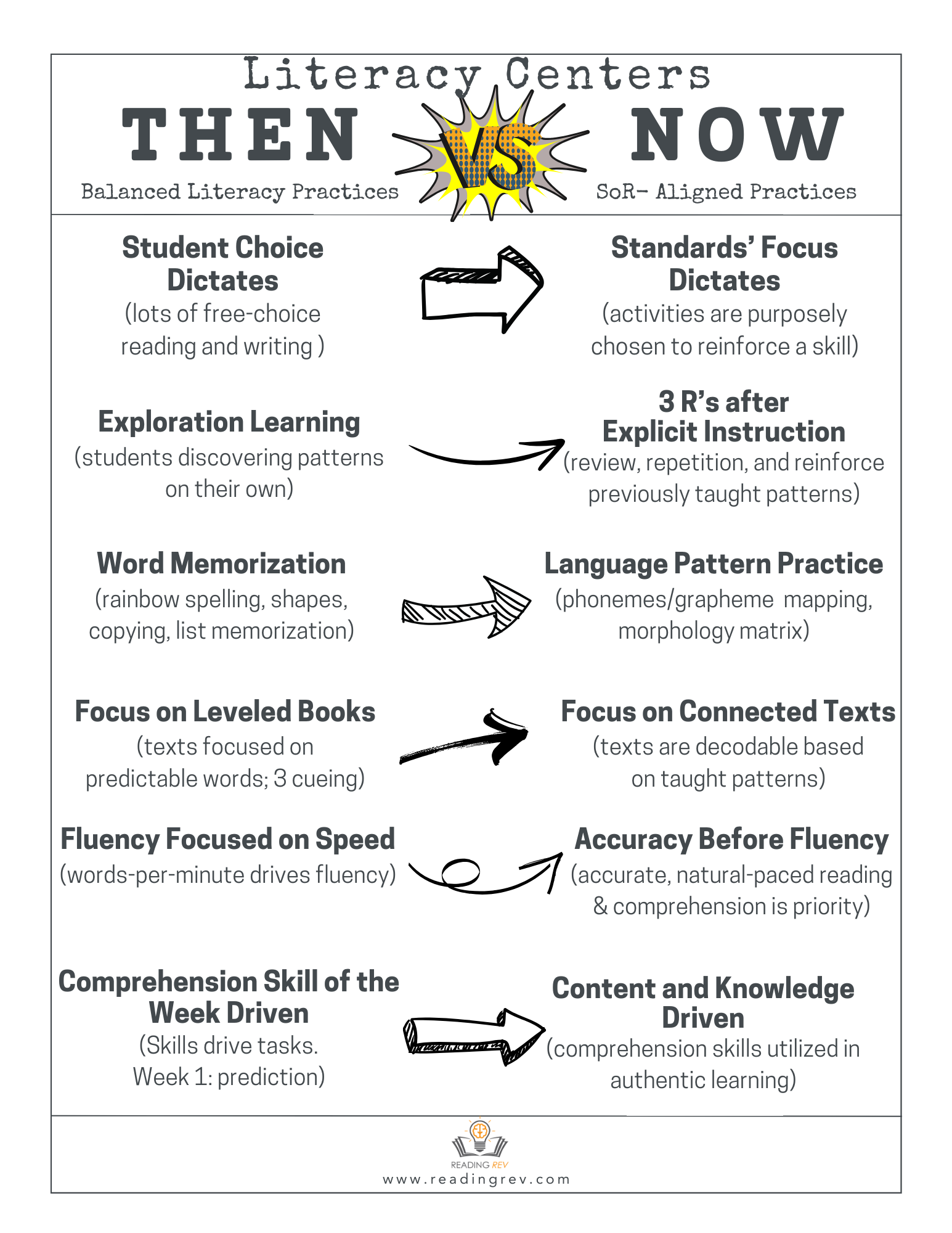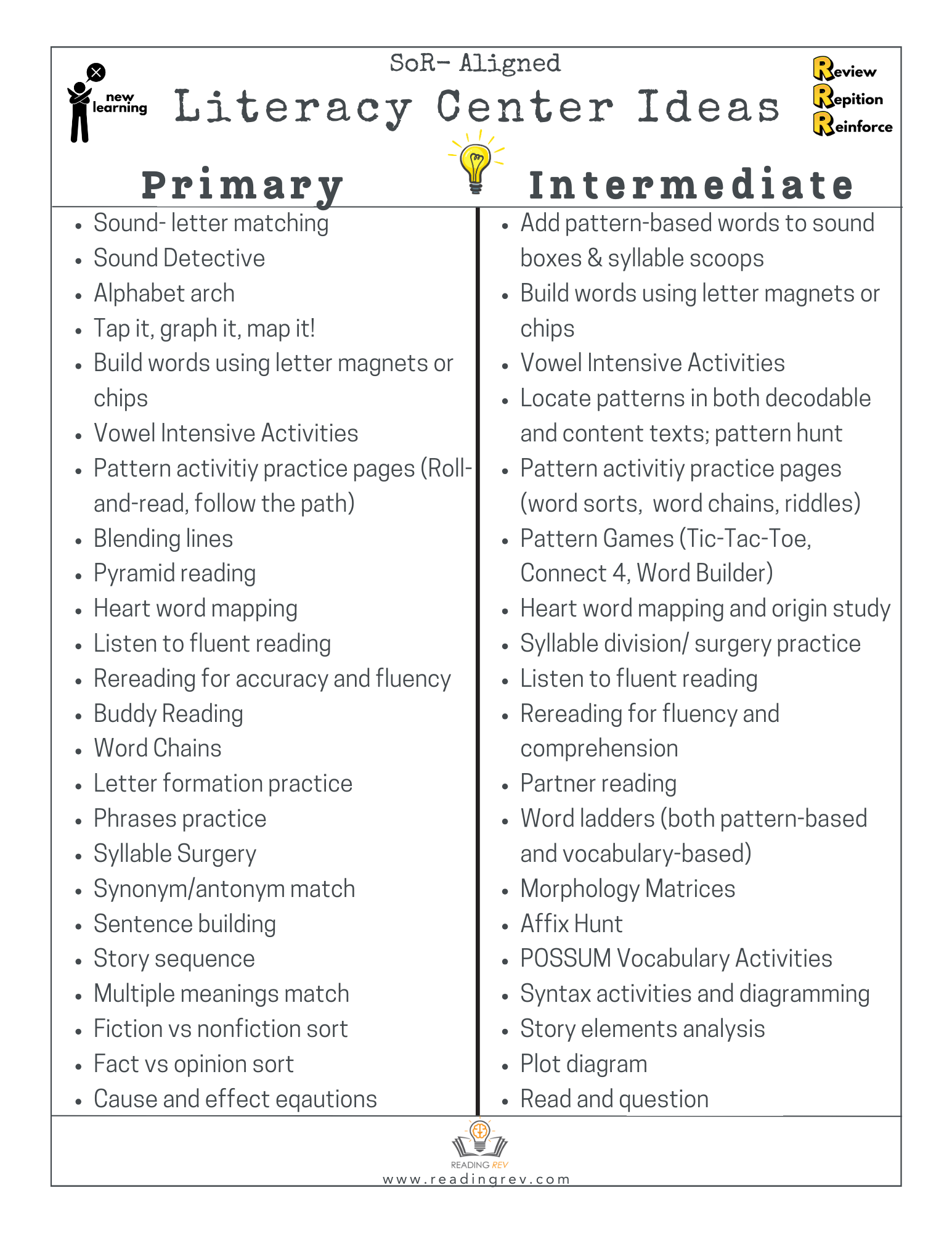Literacy Block Structures & Systems
Does your literacy block feel overwhelming, disorganized, or energy-draining? I recently talked to a teacher who said her 90-minute literacy block is the most stressful part of her day. She can hardly wait for math when things feel manageable again. Her literacy block is in need of a little Marie Kondo style reorganization! Let’s dig into what the research says about effective literacy blocks and some tips and tricks to make it feel manageable and spark joy.
This is a synopsis of our CCIRA conference presentation and Bite Size PD.
You can watch this presentation on the Reading Rev YouTube Channel.
Get the Free Notecatcher here.
A well-orchestrated literacy block will save your sanity and increase student acievement.
One of the greatest obstacles teachers face is finding the time to do it all! How do you fit in foundational skills, fluency, vocabulary building, grammar and syntax, knowledge-building, targeted interventions, students’ love of reading… all the things. These 3 tips will help.
Most elementary teachers have just 60-90 minutes to teach literacy.
How to fit it all in!
1) Be systematic.
You should not be guessing or making up what you will teach. Following a scope and sequence or continuum of foundational skills (phonological awareness, phonics, & fluency) is vital. Start with a diagnostic assessment and then systematically teach the skills and patterns your students need to know from simple to complex. You are not randomly plugging holes! The same is true for knowledge building. Find a curriculum that gives you the skeleton of what should be taught at your grade level based on standards.
Your routines should also be systematic. Making up new lessons and activities everyday is exhausting and overwhlems your students’ cognative load. Predictable routines increase student engagement and performance! If the routines are familiar and systematic, your students can use their brain power on learning new content instead of worrying about what they are supposed to do or what comes next.
2) Start with content
Twenty years ago, we often focused on comprehension skills in isolation. We now know how important it is that our students learn real things about the world. If you focus on teaching knowledge, comprehension skills can be utilized in authentic, purposeful ways. No more “skill of the week!” You can find out more about why knowledge building should drive instruction here. This actually takes something off your literacy block plate!
3) Intergrate. Integrate. Integrate.
First, think about meeting your literacy objectives over the week, not in one literacy block. Marie Kondo doesn’t have you tidy the whole house in one session! You don’t have to do it all every day. Strategic planning to get objectives accomplished in a week or unit is more manageable. Also, research shows that distributive practice is more effective. Spreading practice and review over time creates long-term learning. Learn more here.
Also, remember literacy happens all day, not just in your literacy block! Point out phonics and morphology patterns in your science and history texts. Model comprehension strategies during your afternoon read aloud. We want to create frequency bias. This happens when you learn something new and then see it everywhere! We also want to have students reading and writing about what they are learning! Integrating language arts, history, and science is efficient and effective.
Shifting away from a multitude of small groups and centers…
Data-Driven
Small vs. Whole Group Instruction
1) Remember that data always drives instruction.
The more you understand about what each student knows and needs to know, the easier your differentiation will be. The data you collect drives your next two decisions. We can break away from our old way of thinking about literacy blocks. Current research is suggesting that the majority of our literacy blocks should NOT be time orchestrating small groups.
2) The 80/20 rule will save you time and planning!
The 80/20 rules says that if 80% of your students need to learn a concept, teach it in whole group. Don’t reteach the same content multiple times to different small groups while trying to orchestrate independent learning and centers. Instead, if most of your class needs a lesson, teach it whole class! You still need small group time, but it can be a tool you use when needed, not the majority of your literacy block.
3) Differentiation!
Another way to think about this is that all students get the grade level content in whole group. Every student gets standards-based, tier one instruction. We can scaffold and support here, but we have the whole class engaging in direct, explicit instruction! The more time students are engaged with you, the knowledgeable teacher, the better!
Then, layer on support for those students who need additional practice, reteaching, or gaps filled. This is the traditional MTSS tiers of instruction model, but it’s so important that we ensure all students are getting the the content! We aren’t differentiating our way into students having vastly different learning opportunities while accidently perpetuating gaps! Use small groups as a tool, but it’s also okay to not meet every student in a small group everyday!
Here’s where we’re going to make Marie Kondo proud…
Scheduling and Organization CAN be manageable!
1) Your routines should feel like clockwork!
Establish and practice routines that are developmentally appropriate. It isn’t realistic to expect a 1st grader to work independently for 20 minutes while you are with a small group. The majority of those minutes are going to not be purposeful learning and managing behavior becomes the focus.
This organization looks vastly different across the grades. Look at your grade level and build a literacy block that sets everyone up for success.
The daily literacy block plan below is designed for 3rd grade. Notice that there are three blocks of whole group, two, 10-15-minute small groups, and a partner time where the teacher can circulate. It is developmentally appropriate that 3rd graders can work independently for 20 minutes with the right activities, and this may look slightly different each day as the data dictates students’ need.
2) Tried & True Routine Builders
Kids are incredibly trainable! Spend a significant amount of time establishing routines and expectations in the beginning. Every student should know how they move from whole group to small group, where they pick up and turn in work, and what they should accomplish during independent time. The more systematic you can be, the better.
Some of our favorite systems are classroom countdown timers, tasks charts, predictable systems of student organization, and extension activities for early finishers.
3) Purposeful, independent work.
The truth is, we DO need small group time to meet the needs of our diverse learners. So, the rest of our class has to be working independently or in partners. Our goal is to make that work purposeful. This is a time for students to review and practice what they have been explicitly taught. It’s not a time for new learning, and we don’t need time and labor intensive centers!
Students will stay engaged and on-task more consistently when what they are asked to do is:
not new or confusing
predictable, but engaging; they have done that type of activity before and it’s enjoyable
These two guides will help you make sure your centers and independent work are aligned to the science of reading. You can get the both in the Free Resource Library all February and in the VIP site all year!
You can read more about the latest research concerning literacy block strutures and systems. These articles were our guides for this presentation:
Should Reading Be Taught to the Whole Class or Small Group? | Shanahan on Literacy
Classroom Reading Groups: 5 Lessons From Recent Studies
Small Group vs. Whole Group Instruction - IgnitED
Maximizing Small Group Reading Instruction
I’d love to hear your literacy block success stories! What is bringing you joy? How did you rethink or restructure your literacy block? Comment below how you’ve shifted or the trips and tricks that could make fellow teachers’ lives just a little bit easier.
Remember, one knowledgeable, compassionate teacher can change everything.
~Bri
Full Citation:
Conradi Smith, K., Amendum, S.J. and Williams, T.W. (2022), Maximizing small-group reading instruction. The Reading Teacher, 76(3), 348-356. https://doi.org/10.1002/trtr.2146
The Logic of English. Logic of English, Inc., 2019.
Luna, Bri. “Big Kids Need Phonics Too Series! Step 1: Diagnostic Assessments.” Reading Rev, Reading Rev, 28 Jan. 2023, https://readingrev.com/blog/big-kids-need-phonics-too-series-
step-1-diagnostic-assessments.
“Scarborough's Reading Rope: A Groundbreaking Infographic.” International Dyslexia Association, 4 Apr. 2018, https://dyslexiaida.org/scarboroughs-reading-rope-a-groundbreaking-
infographic/.
Shanahan, Timothy. “Should Reading Be Taught Whole Class or Small Group?” Should Reading Be Taught to the Whole Class or Small Group? | Shanahan on Literacy, Timothy Shanahan, 28
Apr. 2018, www.shanahanonliteracy.com/blog/should-reading-be-taught-whole-class-or-small-group.
Submitted by George Novitsky (not verified) on November 10, et al. “The Simple View of Reading.” Reading Rockets, 24 Jan. 2023, https://www.readingrockets.org/article/simple-view-
reading.
Wexler, Natalie. “Dramatic New Evidence That Building Knowledge Can Boost Comprehension and Close Gaps.” Forbes, Forbes Magazine, 10 Apr. 2023,
https://www.forbes.com/sites/nataliewexler/2023/04/09/dramatic-new-evidence-that-building-knowledge-can-boost-comprehension-and-close-gaps/.
Wexler, Natalie. The Knowledge Gap: The Hidden Cause of America's Broken Education System-- and How to Fix It. Avery, an Imprint of Penguin Random House LLC, 2020.
“What Is Structured Literacy?” International Dyslexia Association, 21 Nov. 2017, https://dyslexiaida.org/what-is-structured-literacy/.
